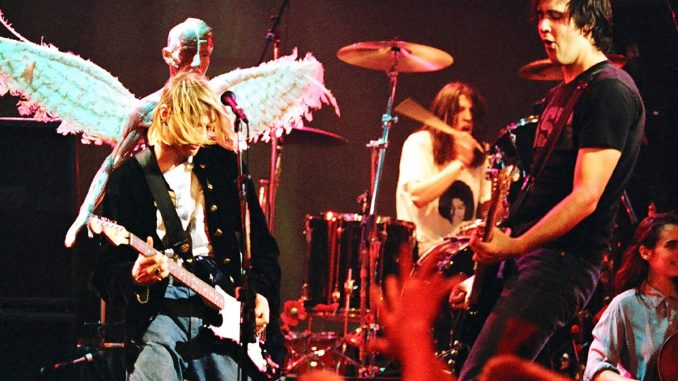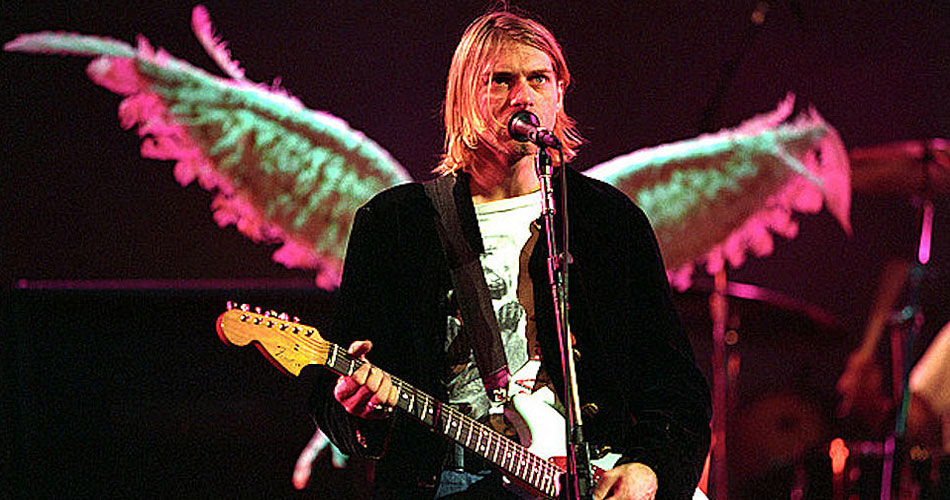
Nirvana’s Dark Secret: Unveiling the Hidden Truth Behind Their Iconic Success
In the annals of rock history, few bands have left as indelible a mark as Nirvana. The Seattle trio, fronted by the enigmatic Kurt Cobain, not only defined the grunge movement but also reshaped the landscape of popular music in the early ’90s. However, as their legend continues to grow, new revelations are surfacing that suggest a darker side to their meteoric rise and the cultural phenomenon they became.
Nirvana’s success story is often told through the lens of their groundbreaking album “Nevermind,” released in 1991. The record, featuring anthems like “Smells Like Teen Spirit,” catapulted them to international fame. But behind the polished facade of commercial triumph lies a complex web of personal struggles, industry exploitation, and the relentless pressure of stardom.
One of the most shocking revelations comes from newly uncovered interviews with industry insiders and associates who were close to the band. These interviews hint at a pervasive sense of disillusionment among the band members, particularly Cobain, who battled profound depression and addiction. Many of those who worked with Nirvana have come forward to discuss the exploitative nature of the music industry during this era, highlighting how major labels capitalized on the band’s success while providing little support for their mental health needs.
Further complicating the narrative is the role of the media. As Nirvana’s fame skyrocketed, they became a target for sensationalism. Reports of Cobain’s struggles were often exaggerated or misrepresented, painting a picture of a troubled genius without addressing the systemic issues that contributed to his despair. “The media’s portrayal was a double-edged sword,” says music journalist Sarah Evans. “On one hand, it fueled their fame, but on the other, it pushed Cobain further into a corner.”
Moreover, the band’s sudden fame brought intense scrutiny, which Cobain found increasingly suffocating. Many of his lyrics expressed feelings of alienation and confusion, resonating with a generation that felt similarly lost. However, this authenticity, while endearing to fans, created a paradox; the more vulnerable Cobain became, the more he was idolized, further complicating his relationship with fame.
The dynamics within the band also played a crucial role in their journey. While bassist Krist Novoselic and drummer Dave Grohl embraced the spotlight, Cobain often retreated into himself, leading to tensions that would ultimately contribute to the band’s dissolution. Their sudden breakup in 1994 following Cobain’s tragic death left many fans grappling with the idea that their favorite band was a fragile construct, barely held together by the very elements that made them successful.
As we reflect on Nirvana’s legacy, it is vital to acknowledge the complex interplay of talent, exploitation, and tragedy that underpinned their success. While their music continues to inspire countless artists and fans, the hidden truths of their journey serve as a poignant reminder of the personal costs of fame. The story of Nirvana is not just one of musical triumph; it is a cautionary tale about the darker realities of the entertainment industry and the pressures that can lead to both brilliance and heartbreak.
As new generations discover Nirvana’s music, it’s essential to engage in this nuanced dialogue, celebrating their artistry while also recognizing the human struggles behind their iconic success.
Leave a Reply